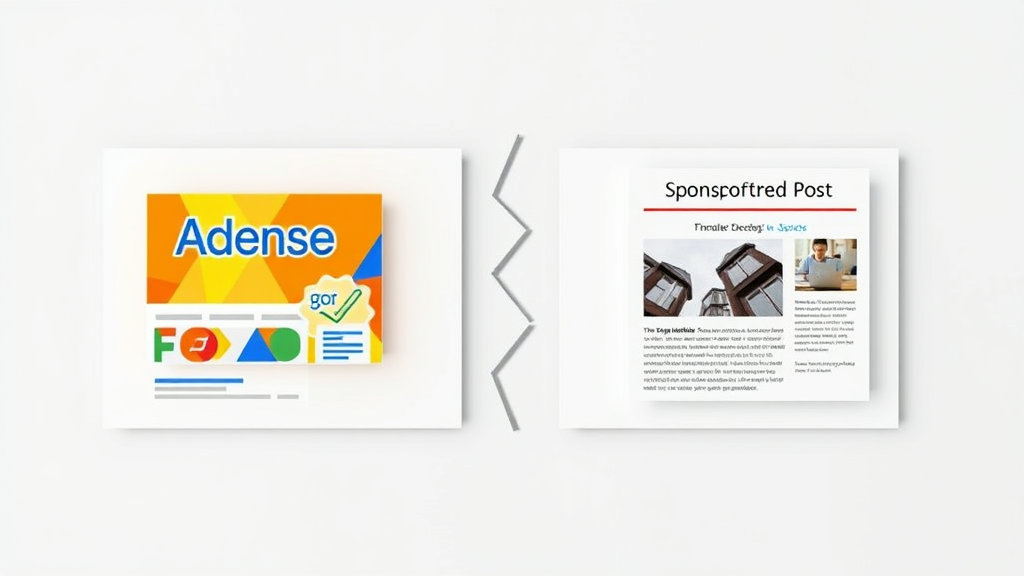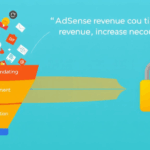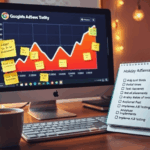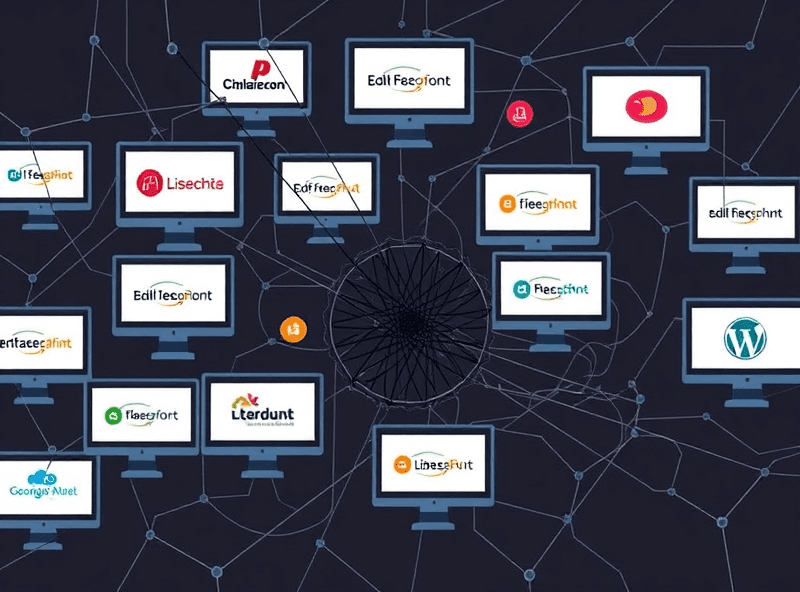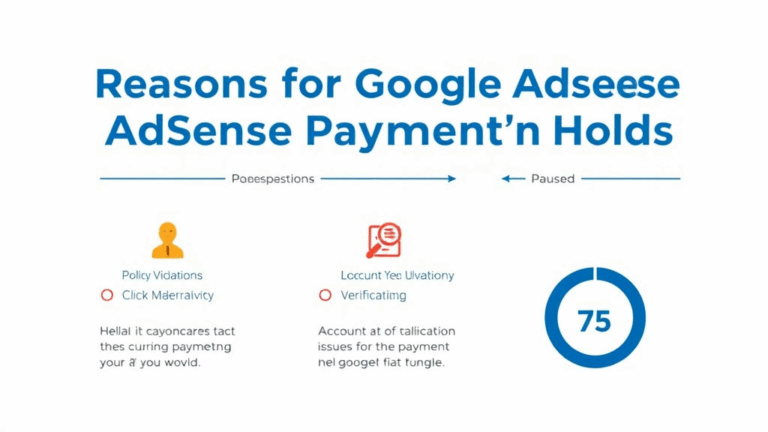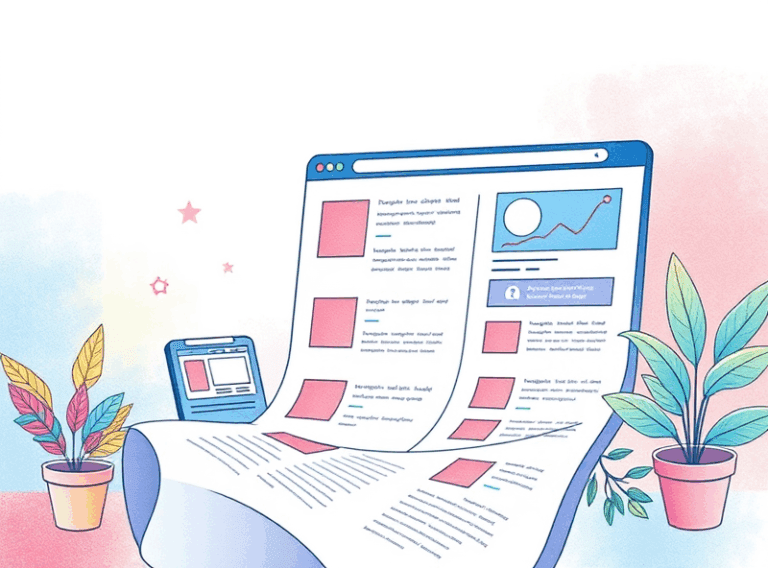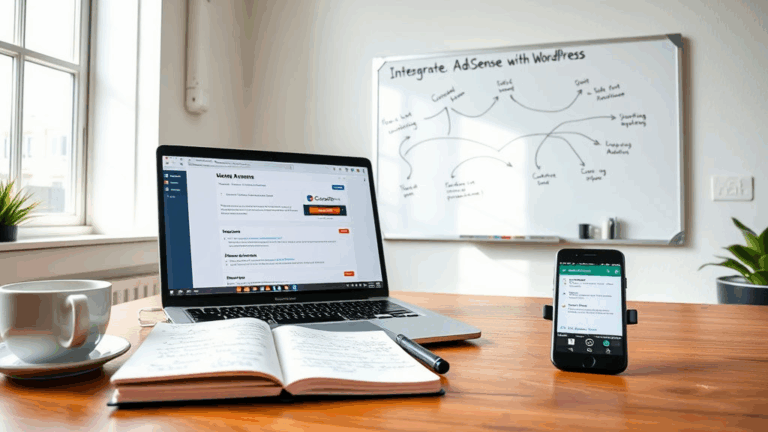AdSense and Sponsored Posts Can Share a Page but Barely Get Along
Stacking AdSense with Sponsored Content Isn’t Actually Straightforward
This one smacked me in the face the first time a direct brand deal wanted placement next to AdSense blocks. The sponsored post was hard-coded into the CMS, branded all over the place, and the client wanted zero “Ads by Google” logos visible next to their write-up. But if you’re still showing display units on the same page as a branded ad — even one you wrote yourself — you’re wading into contested territory fast.
So technically: yes, you can combine the two. There’s nothing in AdSense’s diagnostic alerts that’ll immediately flag you for showing sponsored content next to AdSense units. As long as:
- Your sponsored post is clearly labeled (like, unmissably marked)
- You’re not mimicking the layout or style of the AdSense unit
- The sponsored message isn’t trying to pass as content recommended by AdSense
The real nightmare is when users start clicking your own sponsored links, thinking it’s AdSense content, and Google catches wind of it via user confusion or complaint metrics. Got a warning once because a sponsor widget we built looked a smidge too close to a native ad panel. Fixed it with a 1px border and different font weights, and the UI team protected the site from a full invalid traffic audit. Lucky save.
Testing User Behavior When You’ve Got Both Ad Layers Running
Don’t trust screenshots. In my case, we A/B tested sponsored content placement above and below AdSense units using Heatmap tools and recorded session replays. Results were baffling. Some users clicked both, some scrolled past everything straight to the comments, but the consistent thing: if the sponsored headline was too good — real clickbait-y — AdSense CTR dropped.
That’s one of those behavior collision bugs you only see when you live in a browser for a week. Google optimizes for highest paying clicks over time. If your “legit” sponsored post content is where users click, Google’s ML treats that as shift in user intent. That can literally adjust how often and even what categories get shown in your AdSense slots.
To test this, we filtered a report in AdSense using a custom channel tag off specific post URLs and flagged traffic from mobile Chrome. Turns out, Chrome Android users were 30% more likely to click on a bold sponsored section — probably because it resembles in-app articles.
Revenue Cannibalization Is Real but Not Linear
Someone told me, “Sponsored content siphons traffic from AdSense. Just pick one.” Wrong — it’s not binary. But the revenue lines do cross at weird times.
I ran parallel sponsor integrations on two sites with identical post templates. One leaned into product placements (in-article components with affiliate landing views), the other had a banner-style top-of-post sponsor callout. Ads were pegged to the same CPM floor. Here’s what happened:
- Pages with weak-sell sponsored footers performed fine and boosted overall RPM
- Pages with sponsor calls baked into the intro lost 15-20% AdSense clickthrough
- Mobile-preferred layouts punished AdSense viewability if the sponsor came first
- Affiliate conversion upswing didn’t cover the gap for low-volume posts
The aha moment was reading the log of events fired in GTM: one sponsored link click killed the run of three AdSense impressions on scroll. Can’t blame users — they were just done.
Content Classification Rules Are Vague and Change Midstream
There’s zero reliable way to see how AdSense internally classifies a page — I’ve tried crawling logs, scraping category assumptions, even messing with the AdSense Auto Ads crawler via spoofed UA headers. Nothing you can find publicly will explain why an article labeled “sponsored” one month is demonetized the next.
One actual bug I ran into: auto ads started placing native recommendations inside the sponsored block on a cached feed-rendered page. That landed me an accidental policy violation, because Google mistook the visual wrapper for native anchors. Support had no clue. I had to clear the AMP cache and push live meta name=”robots” noindex for the affected URLs overnight until the reports disappeared.
Third-Party Affiliate Scripts Can Clash with AdSense Load Timing
This happened on a WordPress site using ThirstyAffiliates Pro with auto-linking turned on. Display ads were loading via the head-tag script, and the auto-link plugin was injecting anchor tags into post content… after the DOMContentLoaded event, right where anchor-based AdSense in-article ads were queued.
This combo created an undocumented edge case where the AdSense script tried to mount on already modified anchor DOM nodes. Result? Ad units silently failed render, no warning, still counted as impressions but with no visuals. You get bad RPM and no clue why unless you’re watching the paint timings with devtools open.
Here’s how we caught it:
MutationObserver.observe(document.body, { childList: true, subtree: true });
We piped the changes into a log viewer and confirmed auto-affiliate links were mutating class names post-paint. Now I always defer autolink scripts until after the ads slot lifecycle is confirmed complete.
Cross-Tracker Attribution Can Fragment Audience Intel
Okay so you’re tracking AdSense clicks, you’re running UTM-driven campaigns for the sponsored pieces, and then also bridging everything across GA4 with source/medium values. Here’s what breaks: the user journey across branded clicks (sponsored post) followed by organic clicks (AdSense-recommended articles) gets split into two sessions if your time heuristic is wrong.
I blew a weekend trying to figure out why visitors clicking from newsletter CTAs to sponsored posts, then later returning via Google Discover, weren’t being attributed as returning users. Answer: the custom UTMs on the sponsor link didn’t include referrer preservation, and AdSense traffic sometimes comes via an intermediary Google redirect service that messes up attribution stacking.
Fun thing I found: enabling document.referrer logging server-side gave me partial recovery. Less fun: AdSense native ads fire in iframes. You’ll get nothing from them unless you rewrite tracking with postMessage listeners. I gave up and started syncing click IDs to a hashed session cookie per user, and the analytics started making actual sense.
Page Speed and CLS Can Quietly Kill Sponsored ROI
This is blunt: I once added a sticky sponsor bar above the fold, and between that, the floating AdSense bar, and a cookie accept banner, my layout shift hit 0.4+ and Core Web Vitals smacked me around like I owed it money. AdSense still served, but I was dumped to second-tier ad networks and RPM plummeted.
When sponsors are judged on viewability and engagement metrics, CLS turns into a silent killer. Most of them don’t know what CLS is, but they will email you asking why their Time On Page stats suddenly died.
Here were the worst offenders in my layout at the time:
- Animation-triggered sponsor banners with JS transitions
- Lazy-loading logos at the top of the article (SVGs, even!)
- AdSense auto ads jumping in after first scroll
- Unstyled font flash from externally hosted sponsor typekits
- Any “read more” expansion components above AdSense blocks
AdSense Auto Ads Treat Sponsored Posts Differently — Sometimes
Here’s the thing. If your sponsored post carries a class or meta that trips certain structure signals, Auto Ads may downrank the page’s ad density or even refuse to place in-content units. But it’s inconsistent and maddeningly opaque.
I did a test where I appended <meta name="sponsored" content="true"> plus Open Graph sponsored indicators to some articles, thinking Google would appreciate the transparency. Instead, auto ads skipped in-article placement entirely for 4 out of 5 of those posts. One got a top banner, and that’s it. Remove the meta tag, poof — four ad units showed up again.
It’s not documented. It’s definitely ML-driven. And it means flagging content as sponsored might actually hurt your layout’s revenue loadout, depending how Auto Ads behaves that hour.
I now run a modified Auto Ads script that selectively disables for sponsored URLs and hand-places responsive units instead.
Thank You, Ghost CSS Rules and Margin Wars
If you’ve ever wonder why your sponsored widget jumps unexpectedly when AdSense loads, inspect the margins. Google’s Auto Ads inject their own inline styles — they do it in that slightly smug, passive-aggressive way where their container gets margin-bottom: 16px injected into oblivion and suddenly your carefully padded sponsor section gets pushed off-screen on iPhone SEs. The fix isn’t even complex. Just sandbox the ad section and decouple your layout sizing completely from the native flow. But I swear, more than once I’ve aimed a class name like .no-google-conflict out of pure spite.
